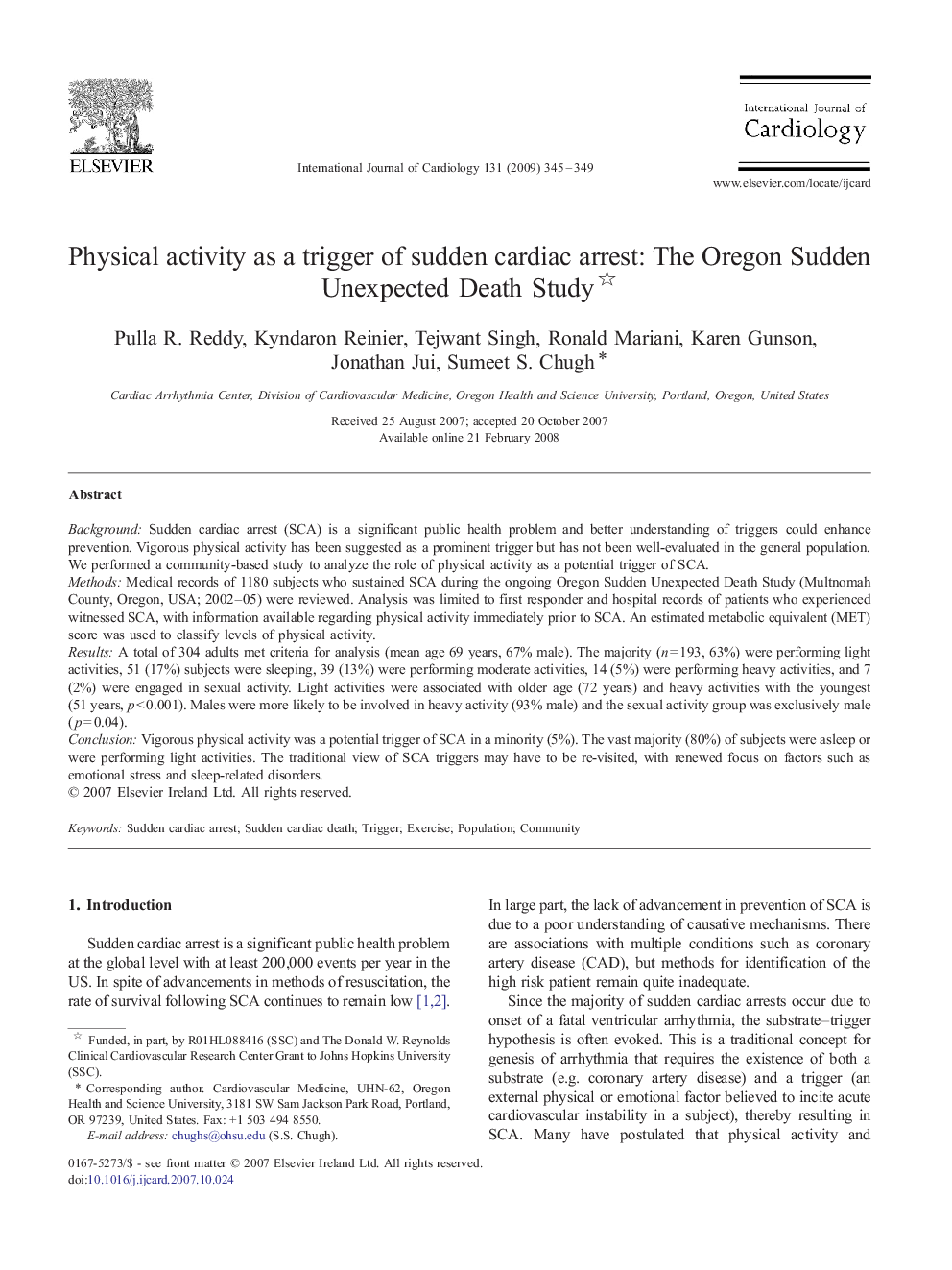| Article ID | Journal | Published Year | Pages | File Type |
|---|---|---|---|---|
| 2933731 | International Journal of Cardiology | 2009 | 5 Pages |
BackgroundSudden cardiac arrest (SCA) is a significant public health problem and better understanding of triggers could enhance prevention. Vigorous physical activity has been suggested as a prominent trigger but has not been well-evaluated in the general population. We performed a community-based study to analyze the role of physical activity as a potential trigger of SCA.MethodsMedical records of 1180 subjects who sustained SCA during the ongoing Oregon Sudden Unexpected Death Study (Multnomah County, Oregon, USA; 2002–05) were reviewed. Analysis was limited to first responder and hospital records of patients who experienced witnessed SCA, with information available regarding physical activity immediately prior to SCA. An estimated metabolic equivalent (MET) score was used to classify levels of physical activity.ResultsA total of 304 adults met criteria for analysis (mean age 69 years, 67% male). The majority (n = 193, 63%) were performing light activities, 51 (17%) subjects were sleeping, 39 (13%) were performing moderate activities, 14 (5%) were performing heavy activities, and 7 (2%) were engaged in sexual activity. Light activities were associated with older age (72 years) and heavy activities with the youngest (51 years, p < 0.001). Males were more likely to be involved in heavy activity (93% male) and the sexual activity group was exclusively male (p = 0.04).ConclusionVigorous physical activity was a potential trigger of SCA in a minority (5%). The vast majority (80%) of subjects were asleep or were performing light activities. The traditional view of SCA triggers may have to be re-visited, with renewed focus on factors such as emotional stress and sleep-related disorders.
